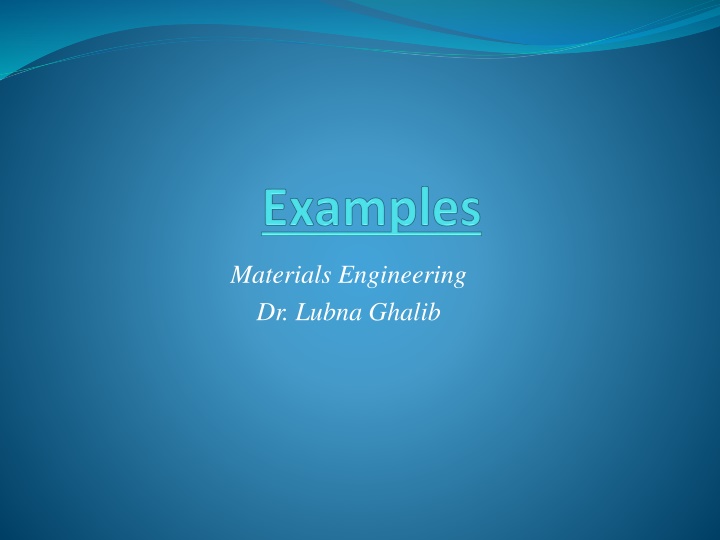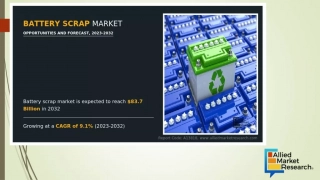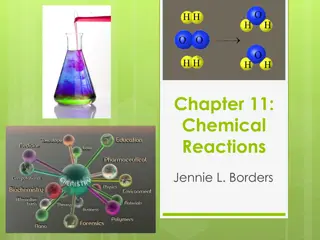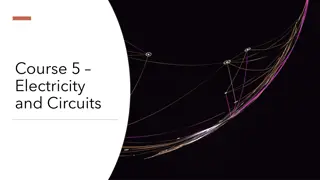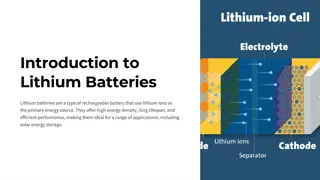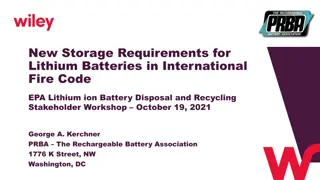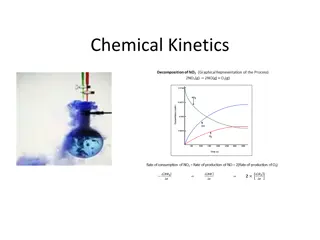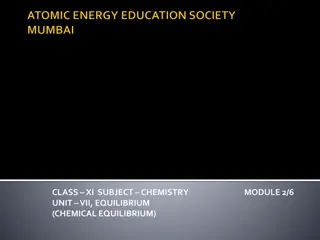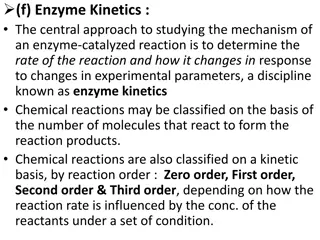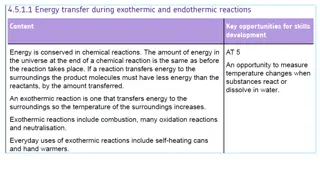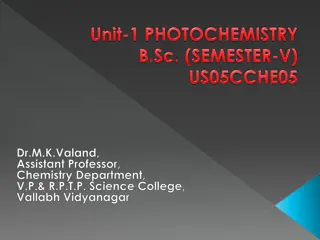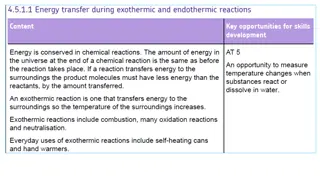Chemical Car Batteries: Making and Understanding the Reactions
world of chemical car batteries and their components, from oxidation to reduction reactions. Learn about the relationship between cells and batteries, different terms like RedOx reactions, and how to create a powerful battery for vehicles. Delve into examples of favorable and unfavorable reactions, and discover the science behind a Coca-Cola battery experiment using specific metals. Unravel the mysteries of voltage potentials and the role of various elements in creating functional batteries for cars.
Download Presentation

Please find below an Image/Link to download the presentation.
The content on the website is provided AS IS for your information and personal use only. It may not be sold, licensed, or shared on other websites without obtaining consent from the author.If you encounter any issues during the download, it is possible that the publisher has removed the file from their server.
You are allowed to download the files provided on this website for personal or commercial use, subject to the condition that they are used lawfully. All files are the property of their respective owners.
The content on the website is provided AS IS for your information and personal use only. It may not be sold, licensed, or shared on other websites without obtaining consent from the author.
E N D
Presentation Transcript
Materials Engineering Dr. Lubna Ghalib
Example 5: .A galvanic cell consist of ( Zn ) electrode in( ZnSO4 ) solution with ( 1 mole ) concentration. The other is of (Ni) electrode in (NiSO4) solution with (1 mole) concentration. The two electrodes are separated with porous partition to prevent mixing of the two solutions. The two electrodes are contacted with conductive wire. Find a) On which electrode the oxidation reaction will be. b) Which electrode will be the anode. c) Which electrode will corrode. d) What is the emf for this galvanic cell, circuit close.
Example 5: .Solution: The half cells reactions are: Zn2+ + 2e- Ni2+ + 2e- (a) Oxidation reaction will take place on Zn electrode .Because the potential difference in Zn half-cell more negative (- 0.763 V) compare with (-0.250 V) for Ni half Cell. (b) From previous answer, Zn electrode is the anode, because the oxidation reaction takes place on anode electrode. (c) In galvanic cell, the anode electrode is the corroded electrode, for that Zn electrode will corroded. Eo= - 0.763 V Eo= - 0.250 V Zn Ni
Example 5: .Solution: (d) Cell potential is the sum of the two half cells potential. Anodic reaction: Zn Cathodic reaction: Ni2+ + 2e- Final reaction Zn + Ni2+ Zn2+ + 2e- Ni Zn2++ Ni Eo= + 0.763 V Eo= - 0.250 V Eocell= + 0.513 V
Example 6: .if we connect Pt electrode with Cu electrode we get: Pt 2+ + 2e- Pt Cu2+ + 2e- Cu By subtraction the lower potential from the higher we get Oxidation: Cu Reduction Pt 2+ + 2e- Eo = + 1.200 V Eo= + 0.337 V Cu2+ + 2e- Pt Eo= - 0.337 V Eo = + 1.200 V Eocell= + 0.8633 V
Example 7: .If the galvanic Cell contain two electrodes, One of them with ( - ve ) potential and the other with ( + ve ), such as Zinc with Copper. Zn2+ + 2e- Zn Cu2+ + 2e- Cu Eo= - 0.763 V Eo= + 0.337 V Zn2+ + 2e- Eo= + 0.763 V Eo= + 0.337 V Eocell= + 1.100 V Oxidation Zn Reduction Cu2+ + 2e- Cu
Example 8: .Write the reactions of the anodic half cell (oxidation) and cathodic half cell (reduction). For the following electrodes and electrolytes, by using standards potential values: (a) Zinc and copper electrodes are immersed in dilute (CuSO4). (b) Copper electrode is immersed in water saturated with oxygen. (c) Iron electrode is immersed in water saturated with oxygen. (d) Magnesium electrode is immersed in water saturated with oxygen.
Example 8: .a) Oxidation ( Anodic reaction ) Zn V Reduction ( Cathodic reaction ) Cu2+ + 2e- V We observed that Zinc reaction possess more negative, so it is the anode and oxidation reaction occurred on it. b) May be there is a low rate corrosion or maybe there is no corrosion , because the potential difference between Cu oxidation (0.337 V) and that formed in water from hydroxide ion (0.401 V) is very small. Zn2+ + 2e- Eo= + 0.763 Eo= + 0.337 Cu
Example 8: .Cu2+ + 2e- O2 + 2H2O + 4e- Eo= + 0.337 V Eo= + 0.401 V Cu 4OH- Cu2+ + 2e- 4OH- Eo= - 0.337 V Eo= + 0.401 V Oxidation Reduction c) Iron potential's difference is more negative, so it is the anode and oxidation reaction occurred on it. Oxidation ( Anodic reaction ) Fe Fe 2+ + 2e- Reduction (Cathodic reaction) O2 + 2H2O + 2e- 4OH- Cu O2 + 2H2O + 4e- Eo= + 0.440 V Eo= + 0.401 V
Example 8: .d) Mg is more negative in potential, so it is the anode and oxidation reaction occurred on it. Oxidation ( Anodic reaction ) Mg Mg2+ + 2e- Reduction (Cathodic reaction) O2 + 2H2O + 2e- 4OH- Eo = + 2.370 V Eo= + 0.401 V
